When it comes to online marketing tools, Ahrefs is one that reigns supreme. SEO experts and developers alike have relied on this tool since its release in 2011, using its tools for link building, keyword research, site audits - and much more.
Tools that rely on big data in the way Ahrefs does can seem daunting… How can you tell if you’re using all of the best features to their highest potential, and not getting lost in the data?
In this blog, we want to bring your focus to some of the tools and features on Ahrefs that you may not even know about. We’ll highlight features that can bring you new content ideas, get the dirt on your competition, and keep you updated with the changing climate of your market’s searches.
Content Gap
When you’re feeling like your competition is killing you in keyword rankings, you may want to turn to the Content Gap tool (under the Site Explorer). This feature pulls multiple organic keyword reports from up to 10 targets, and it’ll show you what common keywords rank among the targets.
When inputting your target URLs, you can choose to include your site’s domain to make sure the report only shows you keywords that you don’t rank for. This will give you the opportunity to ask why you aren’t ranking for these topics and can help you add months of content ideas to your strategy.
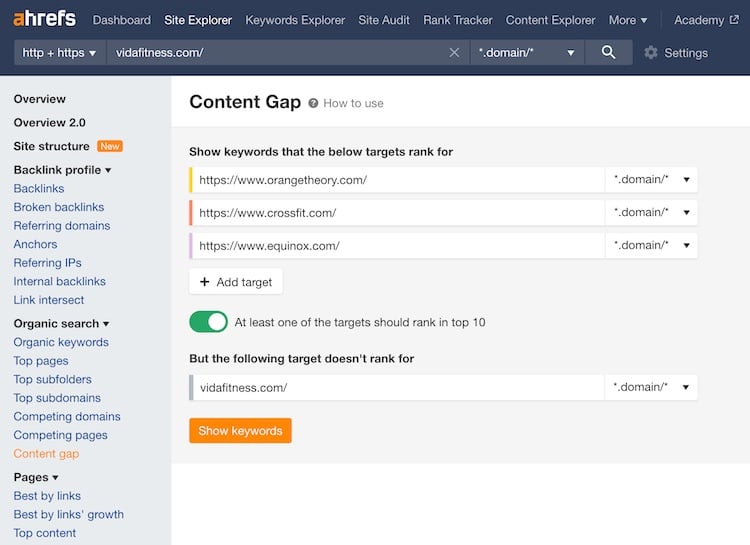
The Content Gap tool demystifies how your competition’s content is performing and gives your team ideas on how you can strengthen your own strategy.
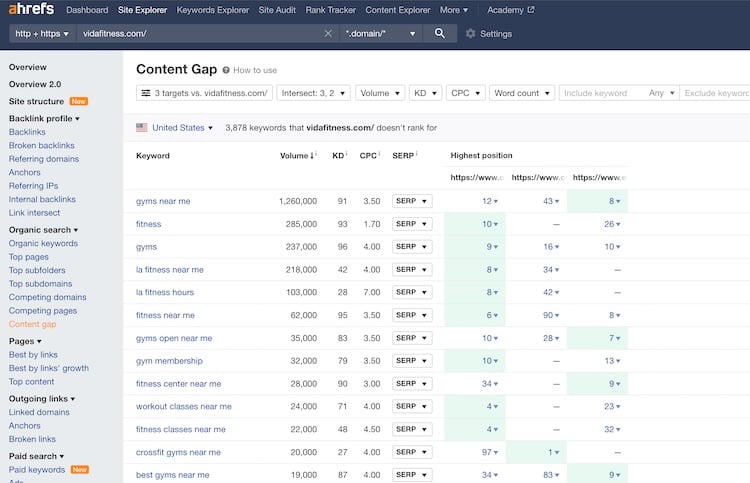
Link Intersect Report
Next up is another Site Explorer tool where you can compare several competitors for valuable insight. Pulling from multiple referring domain reports, this feature will show you the sites that link to your competitors. Similar to the Content Gap tool, you can choose to include your domain/URL and specify for the results to only show websites that link to your competitors and not to you.
To get the most out of this report, you may not want to cast a wide net when collecting info. For example, you may only be interested in referring links to blogs. In that case, when inputting competitors and your own websites, be sure to only run reports on URLs that include /blog/ or /posts/.
The results of this report can give you valuable insight into backlink opportunities. If your report finds that one website has links to all 3 of the competitors you searched, it’s a safe bet that they would link back to you (assuming your content is as relevant as your competition’s).
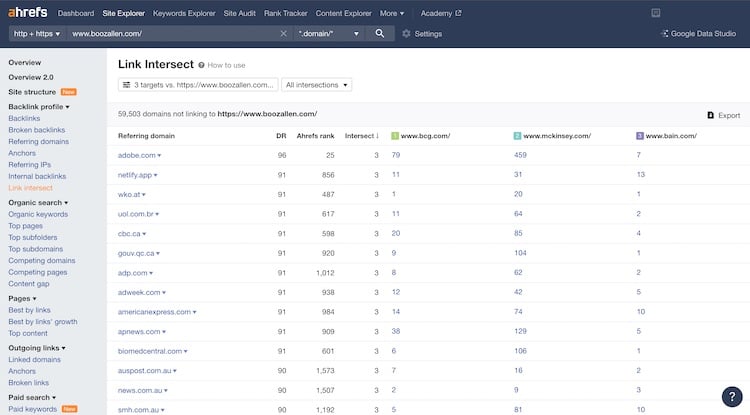
Page Explorer Filters
Most SEOs are familiar with the Site Audit tool from Ahrefs. With comprehensive crawls through your site, Ahrefs pulls tons of insights that you can peruse with the Page Explorer. This hub gives you lots of preset filters to find things like broken images, pages with no meta description, redirect chains, and more.
But what if what you’re looking for isn’t found with the preset settings? Ahrefs makes it possible with customizable Page Explorer Filters. Those with a knack for logic programming will be a natural at this tool. You can build out filters to be as complex or simple as you want. You can filter out all of the pages on your site that include affiliate links (for when you need to edit or remove them), compare current crawl data with the previous week’s, and more.
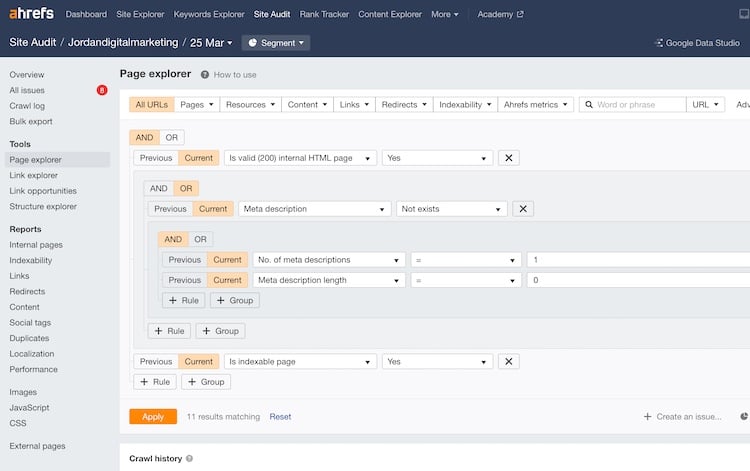
Another cool feature of these Page Explorer Filters is the ability to “Create an issue.” SEOs eyes often go to the “All issues” page of their Site Audit. You can add your own items to be flagged, which can be useful for a client with unique needs. As best practices online are constantly changing, being able to track specific items in site audits can be great for staying on top of your site’s health.
Top Pages for Competitors
It’s natural to look at your own site’s Top Pages in the Organic Search panel of the Site Explorer. But some don’t take advantage of the ability to view competitors' top pages. If you’re just getting started on a campaign or content strategy, a Top Page report of your competitors can be key for your success.
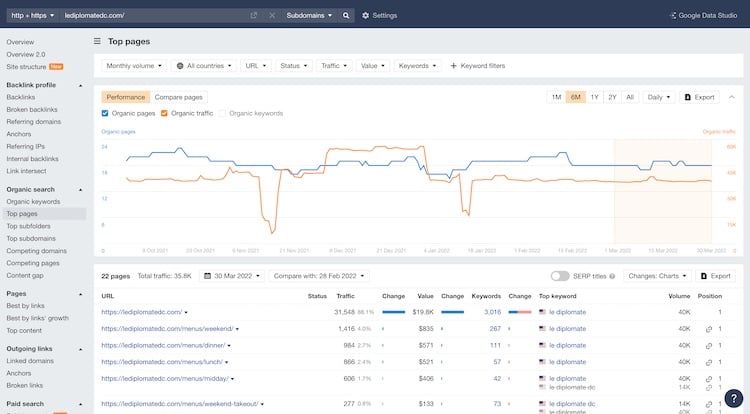
First, gather up a list of 5-10 of your biggest competitors. For each company, plug their domain into the Site Explorer. Open up the Top Pages report, sort by traffic, and then export. In another spreadsheet, copy and paste the top results. Repeat these steps for all of your competitors until you have a solid list of top-performing pages.
As you analyze the results of this report, take note of what performs well. Perhaps your competition all has an FAQs page that your site is missing. Or maybe their “Services” page is better designed than yours. Use these takeaways when thinking of new content pieces you can work on or to guide your strategy of optimizing existing content.
Backlink Alerts
According to a survey of 97 marketers, over 75% of the respondents say they use Ahrefs to check backlinks. Ahrefs’ Backlink resources are part of what sets this platform apart from the rest. But if you’re a marketer that handles the link building strategy of multiple clients, you may forget to carve out time to look at each site’s reports.
This is where the Alerts panel comes in (right at the top of the ‘More’ item in the navigation). You can use Backlink Alerts to set up daily, weekly, or monthly emails with an update on new and/or lost backlinks.
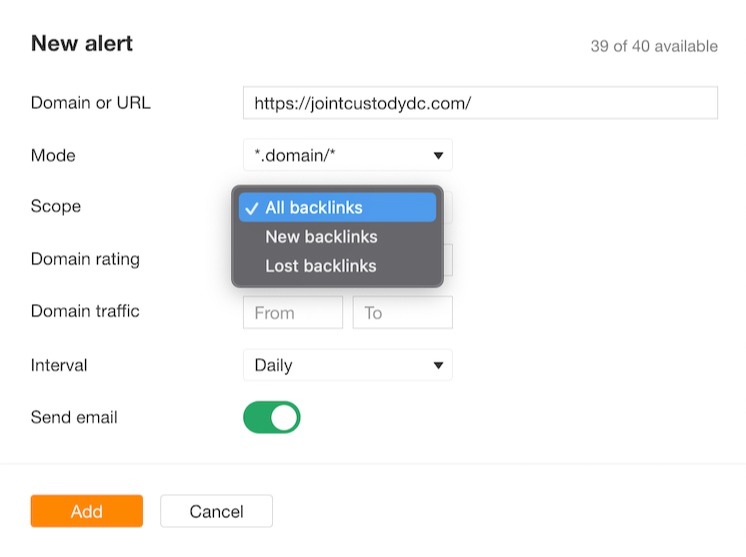
Lost alerts are perfect for link reclamation efforts; your alert report will list out all of the websites that you can reach out to in order to fix your broken backlinks. You can use the new alerts for your competitors, especially if they’re killing it in the backlink game. Keep an eye on the types of sites that link back to them, and use these insights to guide your linking outreach.
The phrase “work smarter, not harder” is never as apt when it refers to using tools for your job. As intimidating as it can seem at first, Ahrefs can really produce specific and actionable insights if you use it the right way. We encourage you to try the above features for your campaigns. If you want to learn more about how we score SEO results for our clients, contact us today!